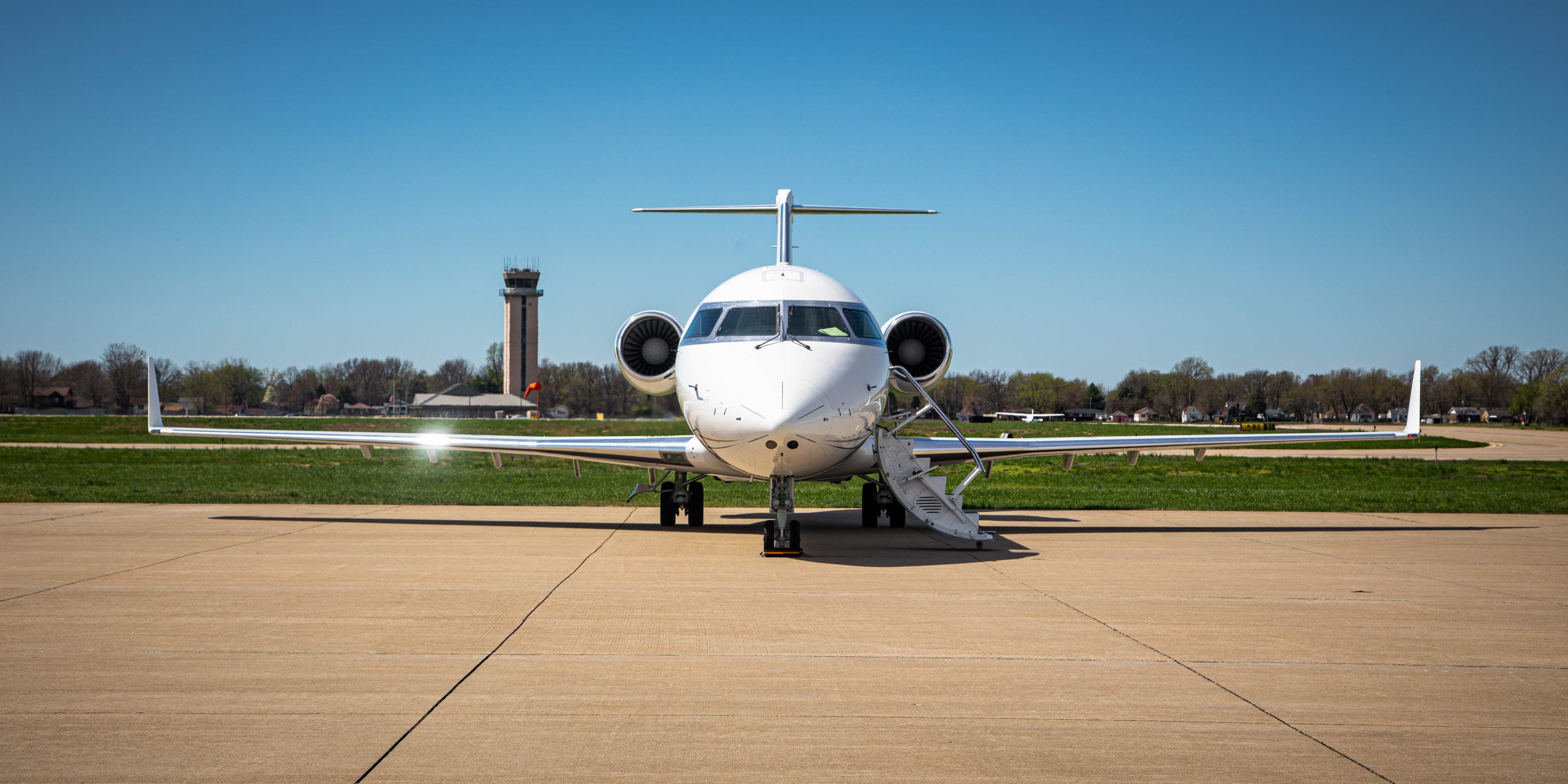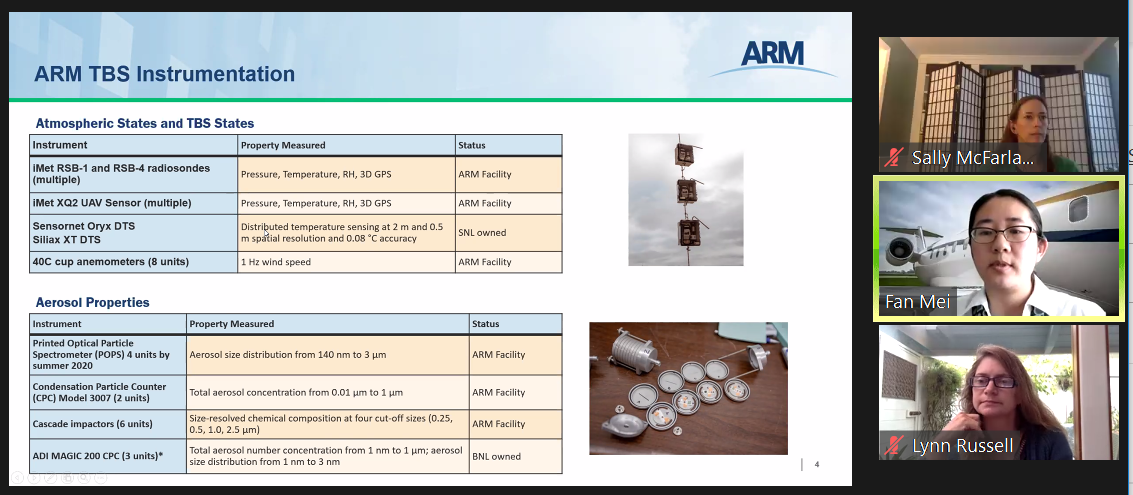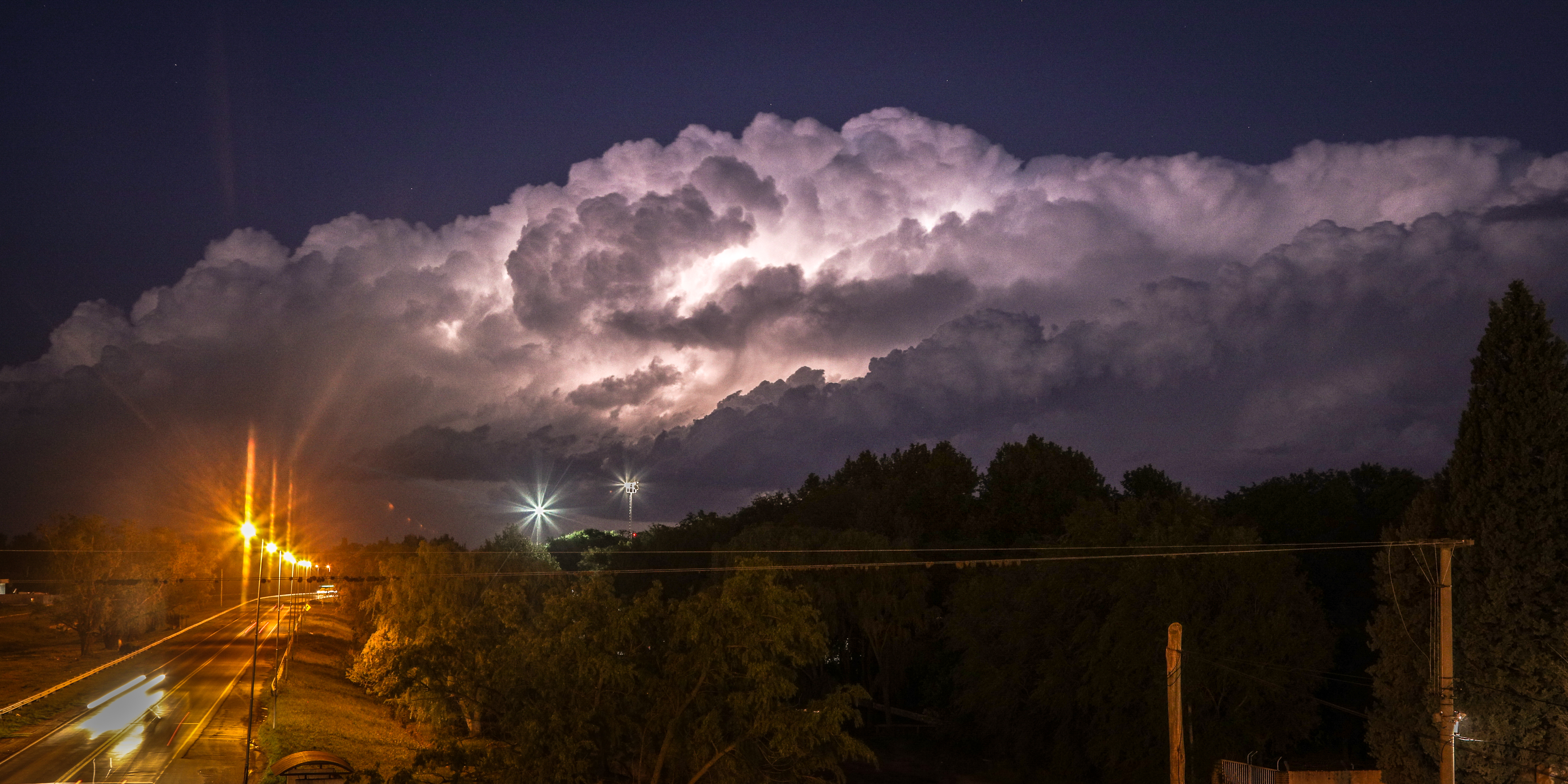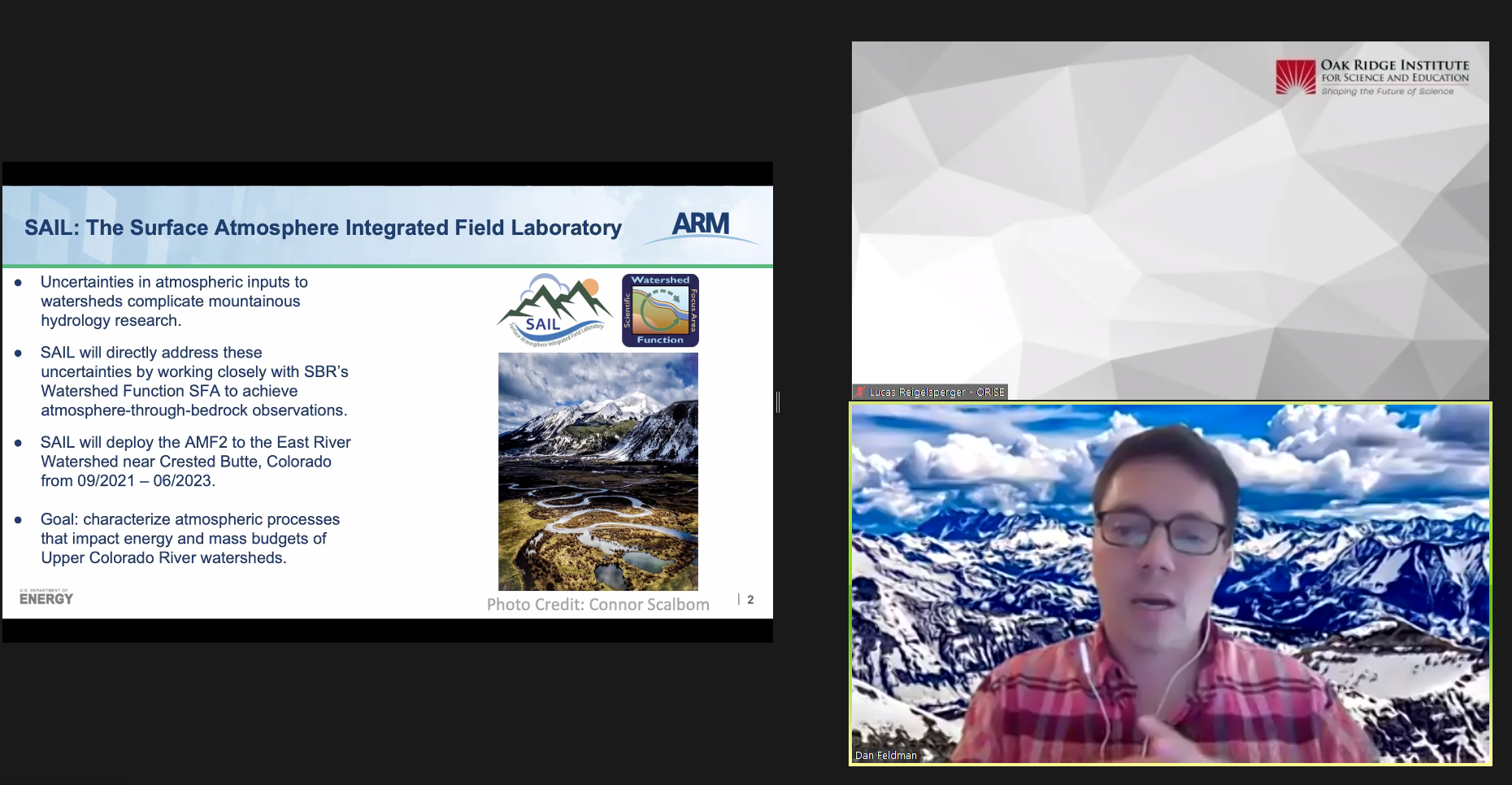2020 ARM/ASR Joint Meeting a Virtual Success

June typically sees a rush of Atmospheric System Research (ASR) scientists and Atmospheric Radiation Measurement (ARM) user facility staff and data users to the Washington, D.C., area to attend the annual Joint ARM User Facility/ASR Principal Investigators (PI) Meeting.
This year was not typical, as—like many other conferences and meetings—the 2020 joint meeting was moved online. And although many speakers noted that circumstances were not ideal, there was still much to be celebrated.
Because video conferencing offered a broader reach than a typical hotel meeting room, more people attended the 2020 joint meeting, which took place from June 23 to 26. About 400 people signed on for the opening plenary sessions, including U.S. Department of Energy (DOE) leadership, national laboratory staff, and university-based researchers.
Affirming DOE’s Commitment to ASR and ARM
The program began with remarks from Sharlene Weatherwax and Gary Geernaert of DOE’s Biological and Environmental Research (BER) program. Weatherwax, the Associate Director of Science for BER, and Geernaert, director of the Earth and Environmental Systems Sciences Division within BER, affirmed DOE’s commitment to ASR and ARM. Both leaders also praised attendees for their work this year before the meeting moved into programmatic updates.
ASR Program Manager Shaima Nasiri introduced Co-Program Manager Jeff Stehr, who joined DOE in November 2019 and was participating in his first joint meeting. Nasiri gave updates on ASR research calls for fiscal years 2019 and 2020. The presentation also highlighted plans for another ASR topical research call later in calendar year 2020.

In addition to providing updates on COVID-19 impacts on ARM, McFarlane shared changes to the ARM Infrastructure Management Board and plans for ARM’s new research aircraft. After an overview of ARM deployments, McFarlane noted that there were seven pre-applications for the 2020 ARM Mobile Facility (AMF) proposal call, and there will not be an AMF call in 2021 due to current commitments.
ARM Program Manager Sally McFarlane also shared an open call to fly guest instruments on ARM tethered balloon systems (TBS) during the TRacking Aerosol Convection interactions ExpeRiment (TRACER) in 2021. She added that proposals can be submitted year-round for small campaigns and guest instrument deployments at fixed sites.
McFarlane closed the presentation by recognizing ARM Aerial Facility Program Manager Rickey Petty, who was preparing to retire June 30 after 26 years with DOE. “Time flies when you’re having fun,” says Petty, who, appropriately enough, helped with many flights during his DOE/ARM career.
A Focus on ASR Working Groups
Without traditional poster sessions or in-person meetings, the virtual presentations by the four ASR working groups turned out to be a success. In fact, more people tuned into these sessions than could have possibly attended traditional sessions or poster talks.

The four ASR working groups— Aerosol Processes, Convective Processes, High-Latitude Processes, and Warm Boundary Layer Processes—correspond with ASR research priorities. These groups help connect researchers studying cloud, aerosol, land, and precipitation processes and process interactions.
Held on the final day of the meeting, morning working group sessions focused on Aerosol Processes and Convective Processes. Afternoon presentations from the High-Latitude Processes and Warm Boundary Layer Processes groups closed out the meeting. “We were very pleased with the attendance and the level of audience participation,” said Nasiri. “While the virtual format lacked the spontaneity and opportunities for one-on-one discussion of the in-person meeting, many PIs were able to take advantage of the platform to share their projects and the progress of their research with their peers.”
During their presentations, the groups summarized related breakout sessions and provided updates on ARM data and field campaigns relevant to their research areas. Providing input to ARM’s constituent groups was a common thread through the working group sessions.
The University of California, Irvine scientist and Aerosol Processes Working Group co-chair Jim Smith summed up the thoughts of many: “I hope this can be the start of some great follow-up discussion.”
Indeed, the working group listservs grew during the sessions, and now some of the working groups are planning topical virtual sessions for later this fall.
Visit the joint meeting web page for presentations and session videos (more will be added in the future).
Invited Talks

During the opening plenaries, Raymond Shaw of Michigan Technological University gave a talk on a November 2019 workshop where participants discussed scientific questions and concepts for a large-scale aerosol-cloud-turbulence research facility. A paper about the workshop is available online from the Bulletin of the American Meteorological Society (BAMS).
Pierre Gentine of Columbia University followed with a presentation on his five-year DOE early career research project, focused on understanding the space-time nature of land-atmosphere interactions. Gentine and student Yu Cheng conducted research for the project at ARM’s Southern Great Plains (SGP) atmospheric observatory.
Without the usual joint meeting poster session, Day Two included a plenary session of seven poster/research talks, which covered:
-
- the Global Aerosol Synthesis and Science Project (GASSP), which seeks to improve modeling of aerosol properties and radiative forcing
- revisiting dry deposition of particles in the atmosphere
- particle chemical composition in the Arctic and Antarctic
- the ARM data-oriented metrics and diagnostics package for climate models
- work between ARM and another DOE scientific user facility—the Environmental Molecular Sciences Laboratory (EMSL)—to develop a joint capability via TBS deployment
- radar-based ice number concentration retrievals toward studying secondary ice production in mixed-phase clouds
- using ARM observations to evaluate process interactions in mesoscale convective system simulations across scales.
A Dive Into Breakout Sessions

To look at ASR/ARM research and projects, eight two-hour breakout sessions—a smaller slate than in past years—took place during the virtual meeting. The first three were held during the afternoon of Wednesday, June 24, and the others happened the next day. Just as the plenaries attracted a larger crowd than usual, so did the breakouts: each session had more than 100 attendees.
During a presentation on the Large-Eddy Simulation (LES) Symbiotic Simulation and Observation (LASSO) activity, LASSO PI William Gustafson announced that 17 more case dates will be released this summer for shallow convection at the SGP. Then, the activity will turn to its next scenario of focus: deep convection during the 2018–2019 Cloud, Aerosol, and Complex Terrain Interactions (CACTI) field campaign in Argentina. Gustafson also mentioned the possibility of starting work on a scenario for the Aerosol and Cloud Experiments in the Eastern North Atlantic (ACE-ENA) campaign in fiscal year 2021.
A session moderated by Ann Fridlind looked at current and potential community projects that pair single-column model/LES and global climate model/earth system model approaches for observation-guided model development. Examples included a hierarchical modeling approach to help improve simulations of the diurnal cycle of precipitation and an open-source framework for comparing ground-based observations and large-scale model outputs.
For those interested in airborne atmospheric research, a session on ARM aerial instrumentation provided updates on ARM’s new research aircraft, unmanned aerial systems, and TBS operations. The Bombardier Challenger 850 jet—now undergoing modifications—is expected to be ready for its first science mission in 2023. As a follow-on to a March 2020 ARM aerial instrumentation workshop, audience members voted on what proposed instruments and measurement capabilities they wanted ARM to pursue for its aerial platforms.
A Bounty of Research

Recent campaigns led by ASR-funded PIs absorbed some of the spotlight during the breakout sessions.
Sixteen presenters lined up to share research related to the ACE-ENA campaign during a breakout session moderated by PI Jian Wang. ACE-ENA will be featured as part of a joint special journal issue, which is accepting submissions, and a session during the January 2021 American Meteorological Society Annual Meeting.
Paquita Zuidema, PI of the 2016–2017 Layered Atlantic Smoke Interactions with Clouds (LASIC) field campaign on Ascension Island, moderated a session on shortwave-absorbing aerosols and their interactions with the large-scale environment. Many presenters focused on research using data from LASIC and complementary campaigns in the southeast Atlantic, such as the U.K. CLoud-Aerosol-Radiation Interaction and Forcing: Year 2017 (CLARIFY-2017) campaign.
Another session focused on the Cold-Air Outbreaks in the Marine Boundary Layer Experiment (COMBLE). Led by Bart Geerts at the University of Wyoming, the six-month campaign ended May 31 in northern Norway. Nathan Wales, operations manager for the first ARM Mobile Facility (AMF1), shared that COMBLE generated 119 datastreams totaling 47 terabytes.
A pair of breakout sessions also looked at future AMF deployments.
PI Daniel Feldman of Lawrence Berkeley National Laboratory led off a session on the Surface Atmosphere Integrated Field Laboratory (SAIL) campaign, which ARM announced in March 2020. SAIL is aimed at characterizing processes that affect mountain hydrology across seasons. From September 2021 through June 2023, the second ARM Mobile Facility (AMF2) will be based in a Colorado watershed, gathering atmospheric measurements to be combined with surface and subsurface data.
A session on the upcoming deployment of the third ARM Mobile Facility (AMF3) to the Southeastern United States stoked plenty of activity in the Zoom Q&A window. Chongai Kuang, who leads the site science team and will help guide the move of AMF3, moderated the discussion about science drivers and siting considerations. People who want to provide feedback to the site science team can email seusteam@arm.gov.
Stay Tuned
If you missed any of the sessions, you can find the full agenda and presentation slides on the joint meeting web page.
There is more to come in the next several months, including possible mini-workshops and breakout sessions on topics that could not be addressed during the joint meeting.
Among those, ARM plans to conduct a series of webinars over the next 6–12 months on topics of interest to the user community. Please complete this survey to let ASR and ARM program managers know which topics are of interest to you.
# # #This work was supported by the U.S. Department of Energy’s Office of Science, through the Biological and Environmental Research program as part of the Atmospheric System Research program.

